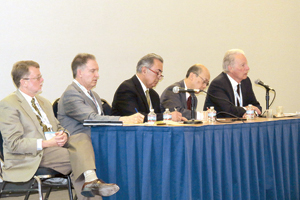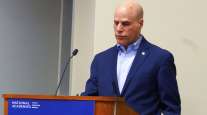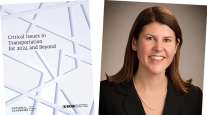TRB Thinkers See Technology Transforming Transportation

“We have a century-old transportation system comprised of vehicles, drivers, and infrastructure,” said Peter Sweatman of Cavita, which provides policy, strategic, deployment and related services to public, private and nonprofit entities. “We’ve done incredibly well with making incremental improvements during that period. [Now] there is a technological tipping point. The rate of change has stepped up dramatically. We have an opportunity to try to work on all of it at the same time. That’s very exciting.”
King Gee of the American Association of State Highway and Transportation Officials focuses on the public policy implications of the changing technology.
“Our public policy goals can be summed up in two words: mobility and safety,” Gee said. “For new technology to be safer, do we need to eliminate fatalities? What if automated vehicles reduced fatalities by 75% or by 50%? When you think about shared autonomy, it opens up a whole realm of possibilities we haven’t had before. We have an opportunity to rethink what mobility is about. The traditional lines between driver, vehicle and infrastructure are being blurred.”
Gee added that the fastest path to automated vehicles might not be the most sensible.
“There’s a low-speed vision and a high-speed vision,” Gee said. “The low-speed vision may be a way to get better public acceptance. At some point, we have to set some minimum safety standards. The highest standards any manufacturer has on safety should be included. We shouldn’t differentiate on safety.”
Toyota’s Ed Bradley advocated for federally funded field operational tests of what he termed “highly” automated vehicles.
With all of the focus on smart cars, Sweatman emphasized the importance of the technology for trucks.
“The freight supply chain is very important,” he said. “There are big issues for heavy vehicles, simply because we’re talking about an 80,000-pound truck with the driver possibly sleeping in the sleeper cab. How confident do we need to be [about the safety and reliability of automated technology] before we get to that point? Given the number of commercial truck drivers, what are the workplace implications of automated freight mobility?”




